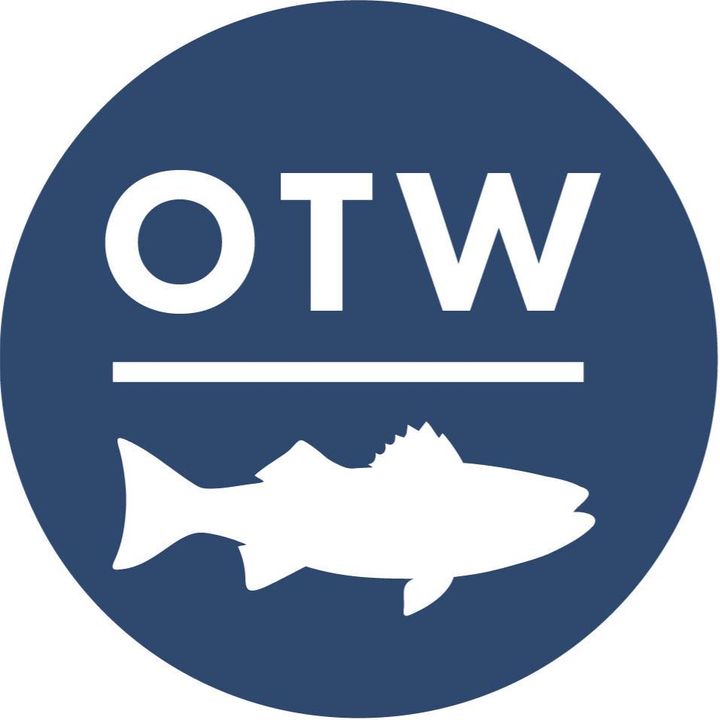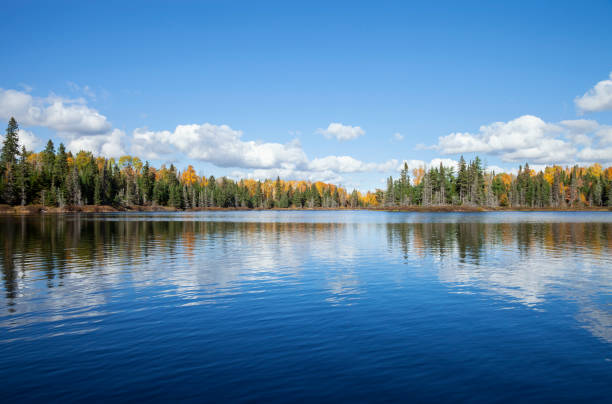



Saltwater backcountry is the best place to throw flies for spring stripers. Coastal marshes burst with new life, warmed by the sun riding higher in the sky. These shallow dark-bottom creeks, basins, and coves provide safety, comfort, and 24/7 dining opportunities that include spearing, clam spat, sea worms, grass shrimp, and crabs.
Will you start the season with a favorite spot for your first cast, or will you be an adventurer and try out a new location you investigated over the winter? Most of us probably make plans based on a location that has been dependable in past seasons—a place we’re reasonably sure will have eager bass. Once your spot is picked out, the next decision is choosing which fly to throw.
From April through June, reliable patterns with a history of fooling bass are confidence builders, and having faith in your fly choice can often be the foundation for success; however, the fly must reflect the color, length, and profile of the bait you’re trying to imitate.
The depth at which a fly runs is also a key factor, so thoughts on fly choice should also include its visibility in the water conditions: clear or muddy, shallow or deep. The ideal fly wallet or box includes flies to cover topwater, flies that suspend at a middle-depth of about 3 to 4 feet, and flies that can run deeper to fish troughs, holes, and channel drop-offs.
The best color choice may vary from one spot to another, and who knows why. For many years, I caught a lot of schoolie bass in the Hudson River’s Croton Bay. Those fish fell in love with all-yellow flies in late April, while their cousins in Great Bay and the Mullica River seemed to prefer all-white or white with a dash of chartreuse. Spring trips to the Norwalk Islands usually got bites on a white-and-olive Deceiver, but on one late afternoon, the bass ignored them. After several switches, a Deceiver with brown-and-white grizzly tail, a little flash, and a tan collar finally got a pair of fish. The details of your own experiences may be different, but the message is to be prepared.
Captain Ray Stachelek of Cast A Fly Charters created the Angel Hair Fly shown in Angelo Peluso’s Saltwater Flies of the Northeast. The book details some helpful tying tips for a pattern that can be modified to imitate almost any baitfish—spearing, herring, anchovy, mummichogs—by simply varying the colors of the tying material. For the spring start-up, Ray advises, “Small school stripers appear in mid-April in shallow bays and estuaries of Rhode Island. The predominant forage during this stage are grass shrimp, mummichogs, and silversides. All streamer flies should be green over silver and no longer than 3 inches. For these, the best tying materials are bucktail, synthetic fibers, and smallish hackles and saddles.”

Almost every salty flyrodder I have met agrees with Ray that fly length can be essential. Although most spring baitfish—spearing, anchovy, and killifish—are usually 2 to 3 inches in length, there are times when more of a mouthful captures the attention of a slow-cruising striped bass. On a late afternoon on Barnegat Bay near the Forked River at the BB and BI markers with outdoor editor Andy Dear, most of our bites were on Half and Halfs tied about 4 inches long with very full and bushy white hackles, and top wings of pink bucktail.
Sometimes, bright attractor flies are the best choice. Dave Bushman fishes along the Connecticut shore in spring; he always keeps a small selection of Clousers tied in vivid electric pink and others in neon chartreuse with some flash, and he’s caught some nice schoolie-bass. “My fly boxes always have some attractors and some darker flies in black, blue, and brown patterns just in case the bright ones don’t pan out. Spring can be a challenging time, so it’s smart to have a selection of fly colors that imitate naturals and attractors.”
Bob Popovics notes, “My early-season fly of choice is an all-white Semper Fleye. It has great action and suspends well in the water column. Spearing is the first bait I encounter as the season opens, and the Semper Fleye with its natural movement can seduce a striped bass from warming, shallow inshore waters. I tie it on the slender side and add a little flash and a small eye—either a tab eye or a Jungle Cock.”
A close look at the Semper Fleye reveals the tying nuances that make it a great pattern, not just for spring but all year. It gets its action from natural feather and bucktail fibers, and also from the way the slender tail hackles are tied in place one at a time and evenly spaced so they carefully wrap around the bucktail’s tail fibers. The Semper Fleye is finished with webby saddles wrapped forward for the head. The slender tail hackles give superb motion while the bulkier head pushes water and creates additional flow past it to the tail. If you haven’t tied a Semper Fleye, check out Bob’s book, Pop Fleyes by Stackpole Books.
Captain Frank Crescitelli of Fin Chaser Charters likes a fly based on the Clouser Deep Minnow. “My early-spring favorite backcountry fly is Dino’s Marabou Clouser. It’s about three inches in length and is tied full, but the marabou fibers get wet, they really appear to shrink down. The light, puffy material also adds a lot of movement to the fly. Chartreuse over white is my top choice if I had to choose only one color, but my save-the-day color is blue over white.”
Depending on your local waters, weakfish have been either dependable or pretty scarce. Crescitelli often fishes the back bays behind Long Beach Island and in southern Barnegat Bay where chumming with grass shrimp is almost a religion and draws weakfish to the fly. One of the best at this game was the late Herb Miller, whose legacy survives through a proven fly he created. Crescitelli comments, “Another favorite spring pattern that I rely on is the Crazy Leg Shrimp Fly created by my friend, Herb Miller. In yellow and white, tied about 3-inches long, it works like no other. It has rubber legs like you’d see on a freshwater bass spinner bait, with sparsely added Krystal Flash and small lead eyes.”

Speaking of shrimp flies for spring stripers, Tony Lolli’s “Guide Flies” in the June 2021 issue of On The Water focused on Steve Culton’s Grass Shrimp Solution. It’s easy to tie and remarkably effective on striped bass. Steve fishes it among a trio of flies on floating line near the surface, much like the way a live grass shrimp drifts in the current. At night, small shrimp flies are very effective. I used to watch masses of shrimp floating in the lights around our dock at the top end of Barnegat Bay.

Spring along the marshes is also a perfect time to fish poppers, with the added reward of exciting visuals of bass or bluefish rushing a popper, slashing, swirling and pushing water. A quiet early morning before the wind picks up or a slick afternoon in a quiet cove are great fly-rodding experiences, with jolting strikes that really get your heart thumping.
Bob Popovics says, “I can’t leave home without a Bob’s Banger! Poppers are early-season killers, and the strikes are great to watch. If I need to go a bit deeper, my choice is a Jiggy Fleye.”
Captain Craig Cantelmo of Fin-Addict Fishing, and tackle rep for Pure Fishing, also likes the topwater visual excitant. “For the past few seasons, my clients have caught their first striped bass of the season along the grass banks of Long Island’s back bays on white poppers with long white hackles. The dark mud bottom warms quickly and gets the fish on the feed. This fly makes a lot of commotion and induces strikes because the water is only one to three feet deep and every bass in the vicinity either sees it or hears it. I used to rely on a high-tied Clouser Minnow in white and brown to mimic mummichogs that are in the creeks all winter. This fly got lots of follows, but fewer strikes than the poppers.”
Captain Jim Freda of Shore Catch Guide Service is an experienced hand at fly fishing for spring striped bass. He likes to be ready for any situation, water condition, or bait that he may find in his back-bay searches.
“The first predominant spring baits are spearing and bay anchovies, so fly patterns in the 3- to 5-inch range will fit the bill. Your arsenal should include Popovic’s Jiggies, Surf Candies, and Siliclones. Other good choices for spring-season patterns include Skok’s White Bait Mushy, Steve Farrar’s Softex Minnow, Clousers, Half and Halfs, Deceivers, and Bunny Flies. A well-stocked fly box will have flies tied both sparse and full to match whatever bait is prevalent.”
Rick Ferrin and his brother-in law start their early striped-bass fly-fishing quests in Great South Bay and across the Long Island Sound near the Norwalk Islands.
“Over many seasons our favorite fly patterns have changed, but some have come full circle and we’re still fishing them. We both enjoy trying new materials and new patterns, perhaps something we saw at a winter show or on YouTube.”
“My first favorite many years ago when I started fly fishing was a Brook’s Blond in white with a yellow top wing, tied on a 4/0 Eagle Claw 254, with a braided tinsel body. I probably should, but I don’t use the Blonds much anymore, and certainly have dropped my hook size down to 1/0 or smaller for most of my flies. I switched to the Deceiver and later got super charged over the electric chicken Clouser Minnow in in chartreuse, white, and pink color scheme.”

“The past two seasons I’ve been tying a lot of Bucktail Deceivers, Polyfibre Minnows high-tie style, and some minnow-like patterns using EP Fibers. The EP stuff is really easy to tie with and I like how the shape of the fly can be trimmed with scissors to alter its silhouette. I still use white and yellow (or chartreuse) a lot, but with the EP Fibers, I have added brown and white, all-yellow, and white with pale blue. The EP Fiber flies seem to hold up to relentless bluefish attacks much better than natural hair.”
The first cast of spring is always full of anticipation. Feeling the rod make its cast, water swirling around your waders or pushing your boat in the current, stripping the fly, and the magic of coming tight on the first bass is a special moment. Catch ‘em up!
Six Classic Fly Patterns for Striped Bass


